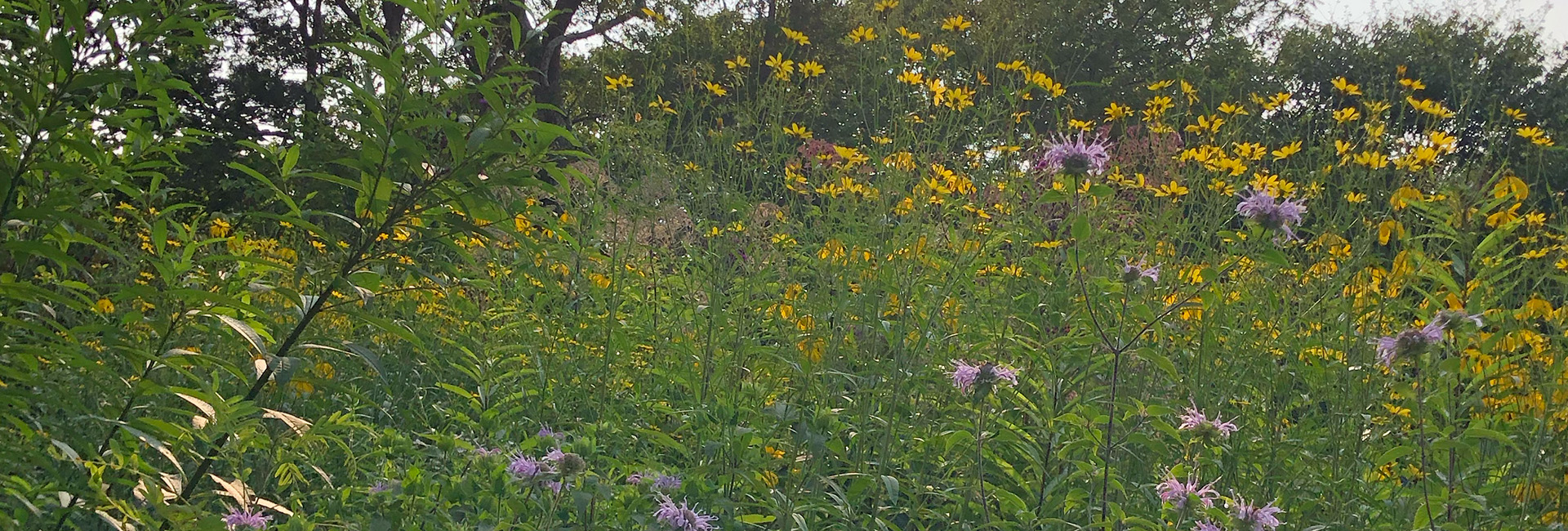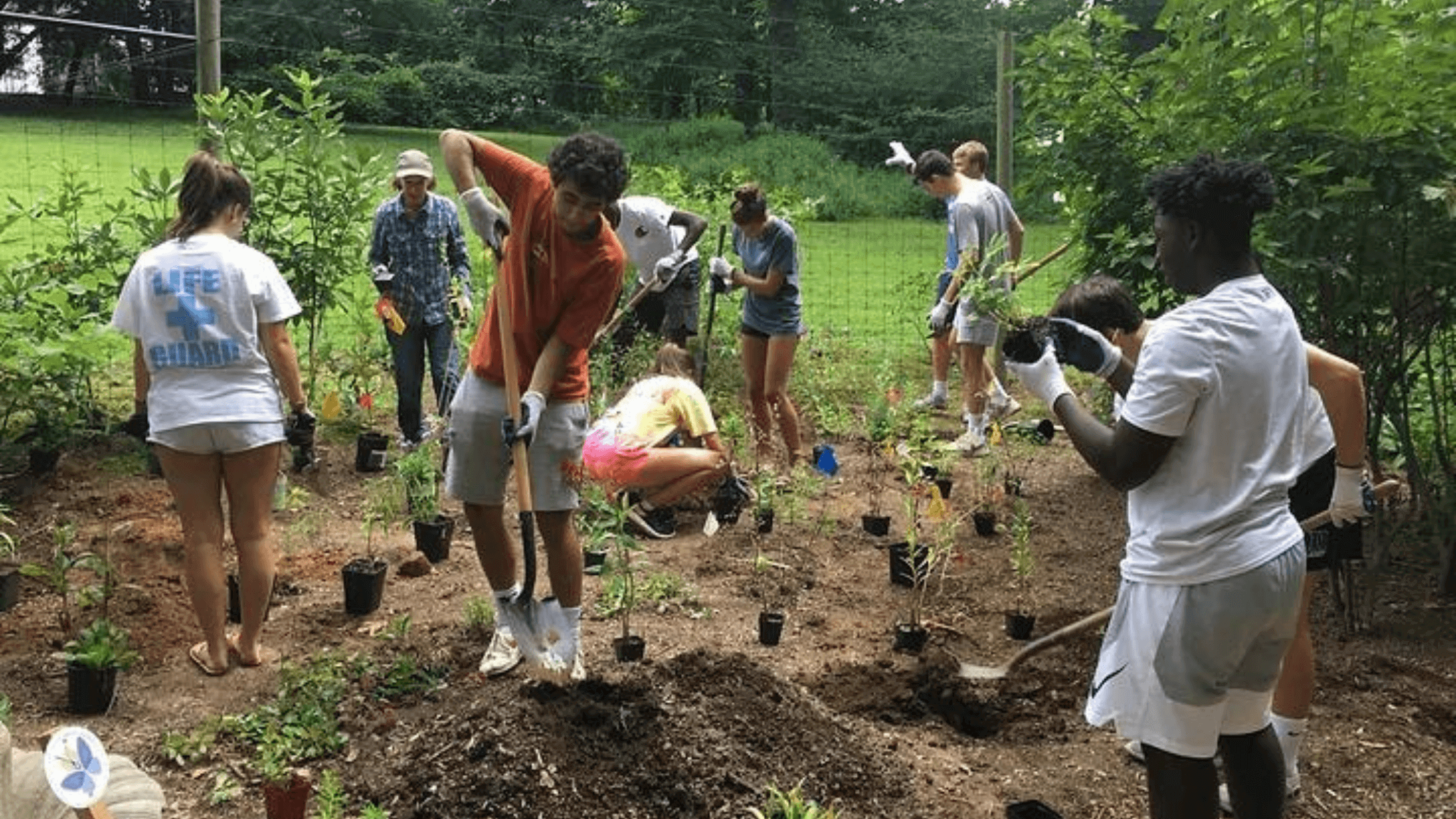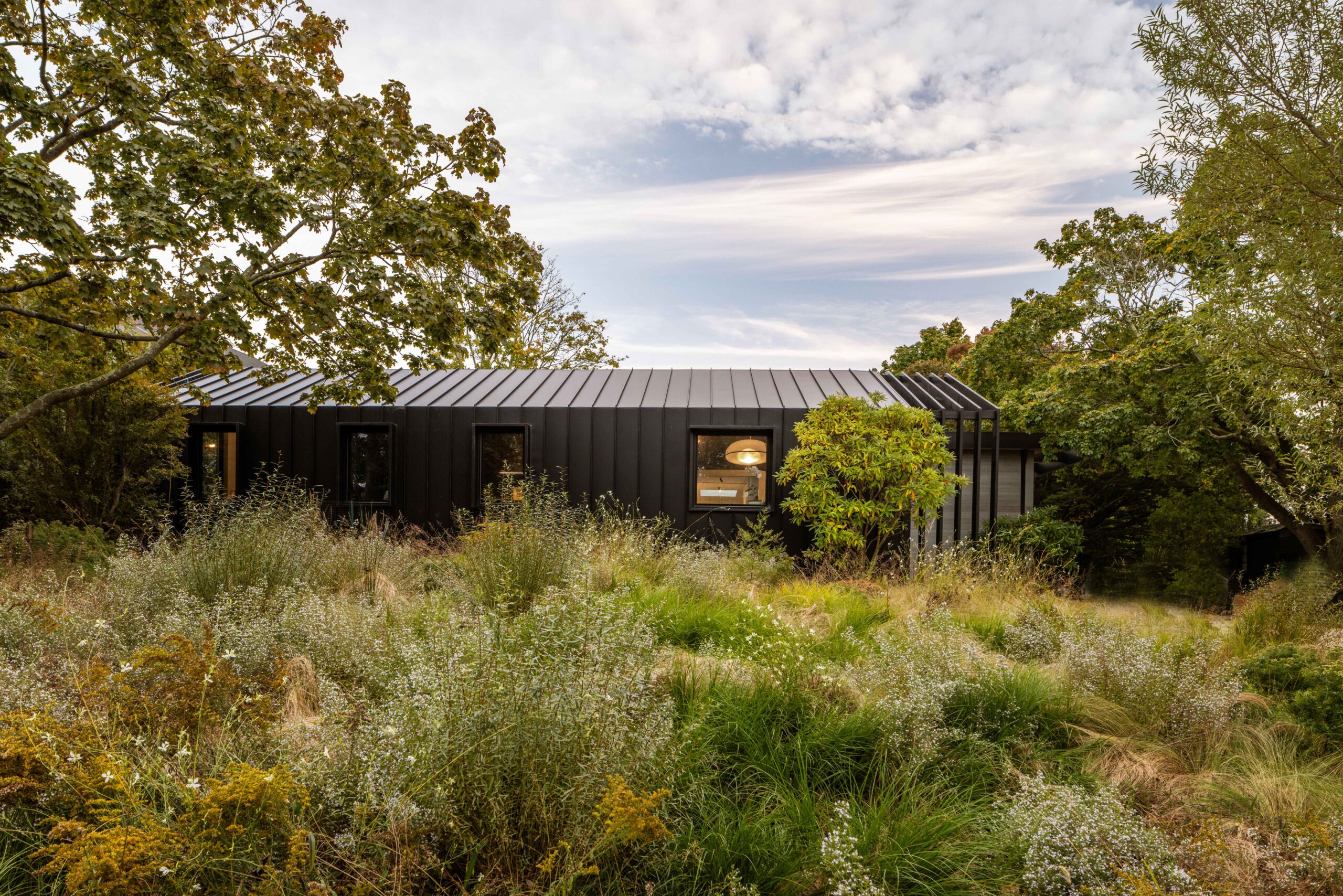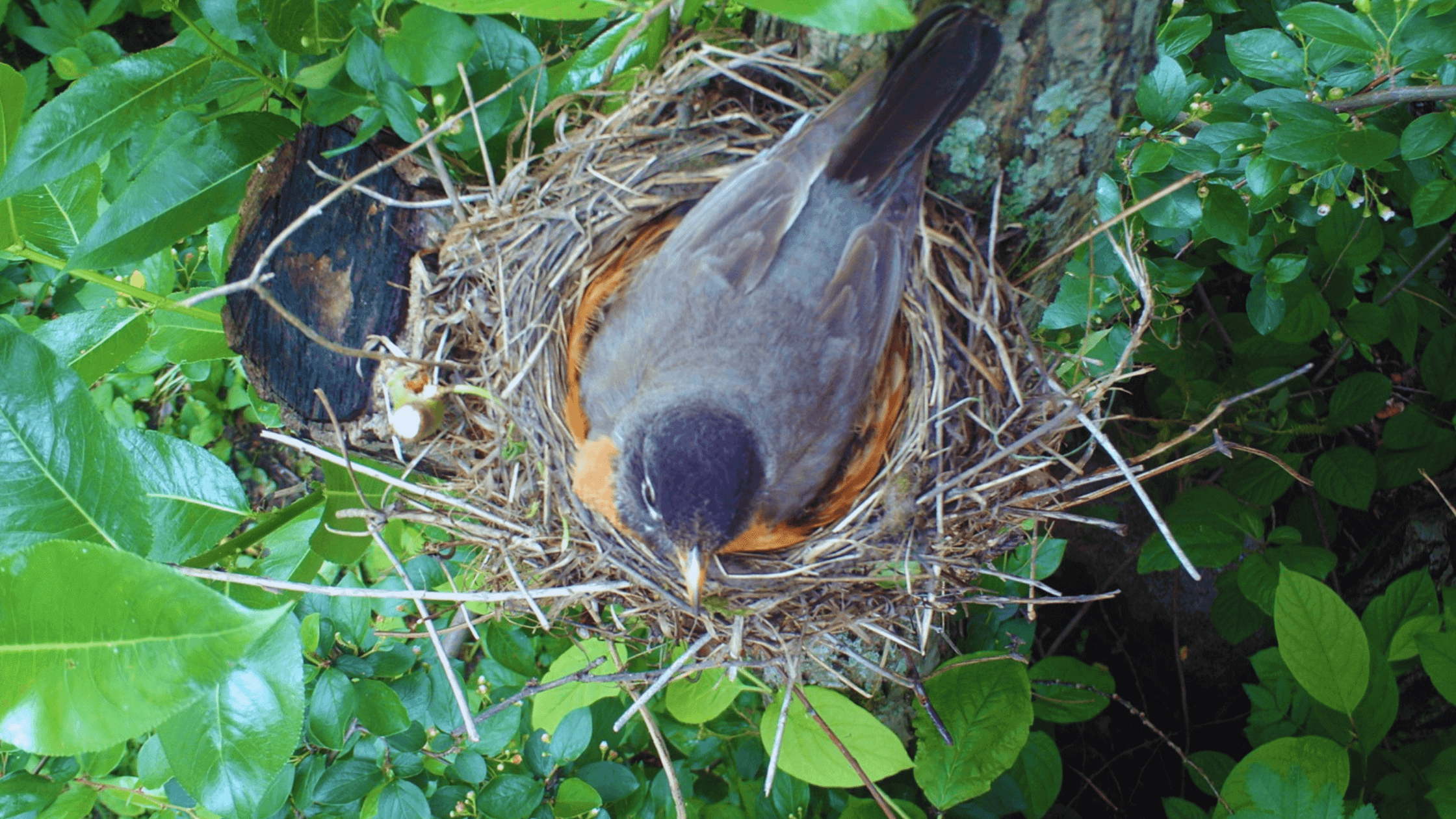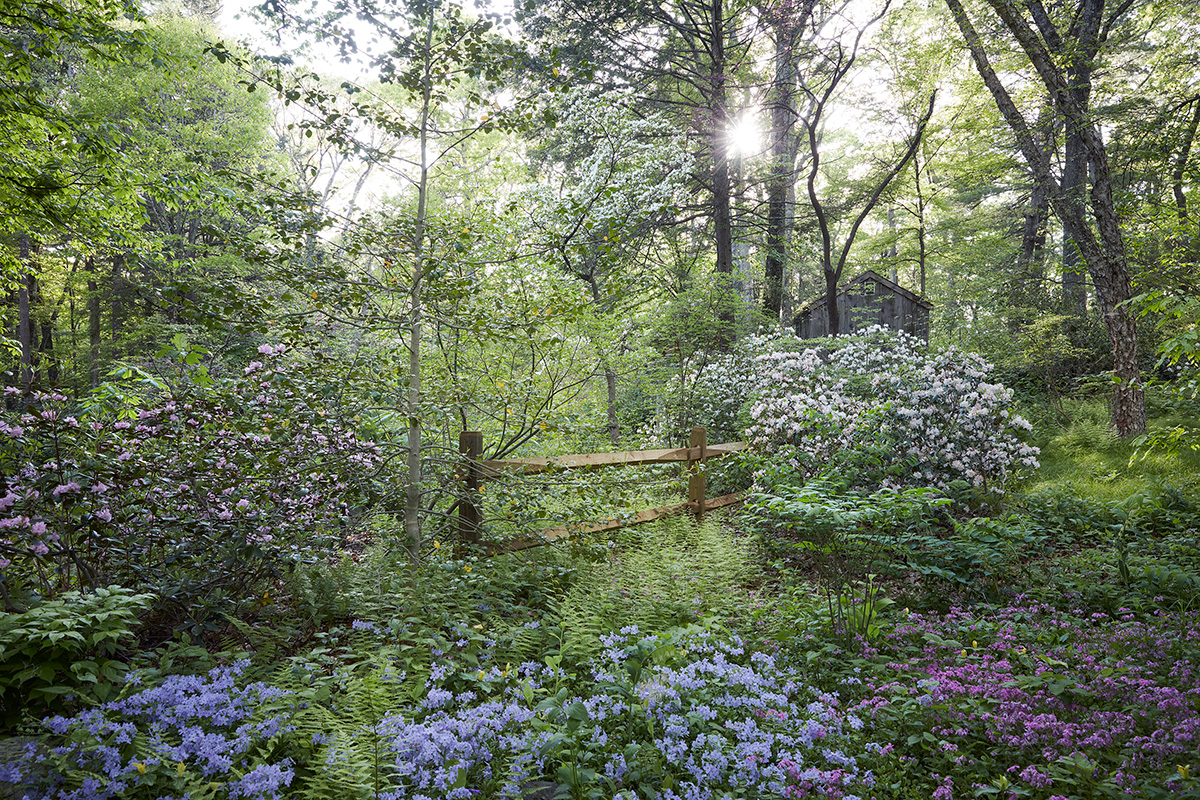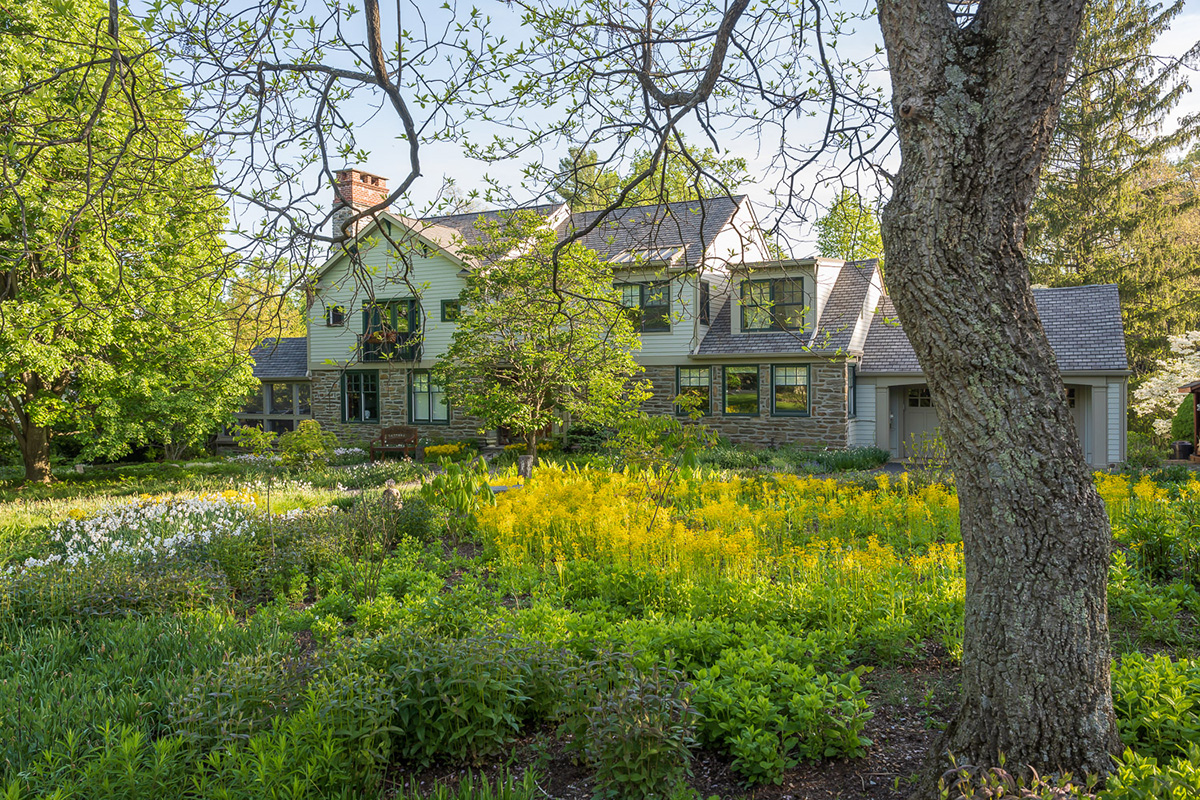
“What does aesthetics have to do with ecology?” asks Joan Nassauer. Turns out a lot. A professor of landscape architecture at the University of Michigan, Nassauer has been studying how to make ecological gardens more acceptable and accessible. Several decades ago, she coined the phrase “cues to care,” which has now become a catch phrase among ecological gardeners. (Read her paper Messy Ecosystems, Orderly Frames and a recent review paper Cues to care: A systematic analytical review.) Cues to care are the key indicators that a landscape is intentional and being looked after. Think: mown turf, visible, unimpeded windows, and prominent, recognizable flowers. Most people find these things comforting. “We want to affect human dominated landscapes to protect and increase biodiversity, increase their capacity to store carbon, and ensure human comfort with rising temperatures,” says Nassauer. But the key to acceptance and success lies with our ability to “create landscapes people are happy to inhabit,” she says. The size of your property does not matter. Every bit of land can make a difference. “The 1/4 acre or even 1/8 acre is in some ways the most important, because from the standpoint of a seed, or a pollinator passing by, or a migrating bird being able to stop and rest, these small pieces all contribute to a larger matrix that is the functioning landscape.”
As more people learn about the dangers of conventional landscaping with its toxic lawns and “ultra-processed plantings,” as Perfect Earth founder Edwina von Gal calls them, they’re discovering the benefits of a healthier, looser, chemical-free approach, where lawns are diminished, native plants replace unsustainable ones and are allowed to grow freely, and dead trees or snags are celebrated as sculpture. Cues to care become an important bridge linking the wildness of nature with the intentional. Nassuer notes that cues to care are “not universal, but culturally contingent.” Experiment on your own property, talk about them with your neighbors, and take some cues from these ecological designers who share with us how they show they care.
Incorporate straight lines and right angles.
“As Janine Benyus of the Biomimicry Institute says, there are virtually no right angles in nature. Designing paths in straight lines and crafting beds with right angles shows intention,” says von Gal. “The moment someone walks into a space and sees a grid, they know they are in a garden.”
In her garden on Eastern Long Island, von Gal created geometric beds and filled them with an array of native plants that she lets grow freely with wild abundance.
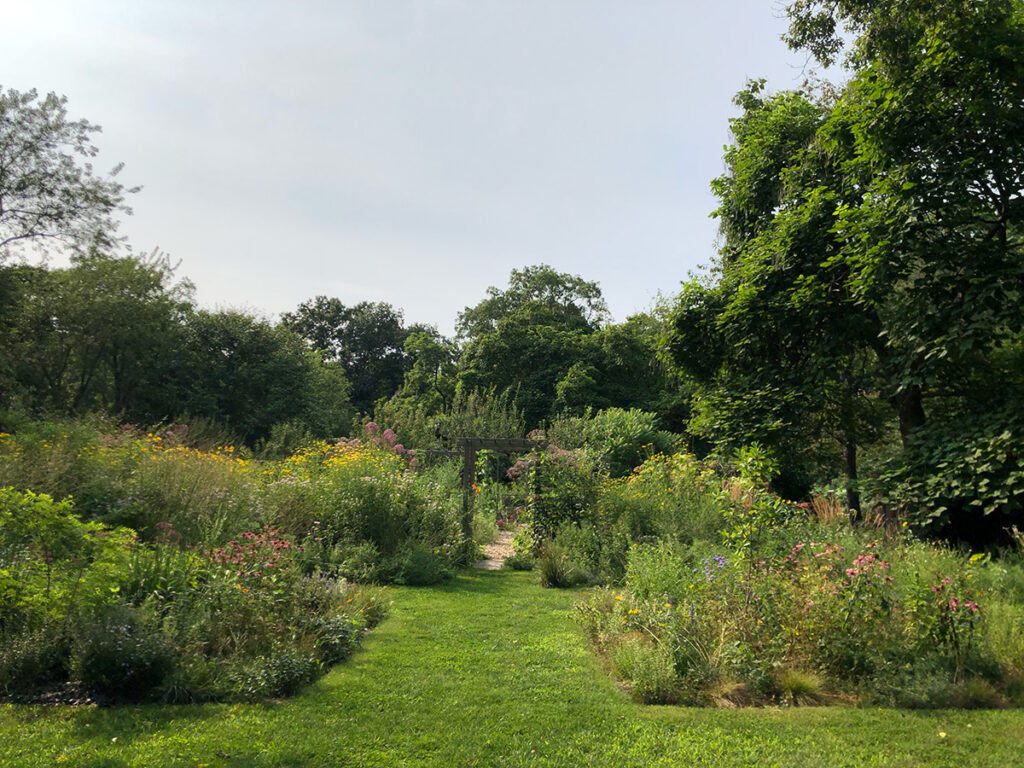
Create paths.
“I think paths are critical—clear, wide-open paths,” says Benjamin Vogt, landscape designer and owner of Prairie Up. “They invite people into the wildness with a direct and accessible sightline to follow.” Vogt uses mown lawn, rocks, or mulch to create walkways and recommends that the paths be “wide enough that if and when plants cascade over, you still have a clear, touchless path down the middle.”
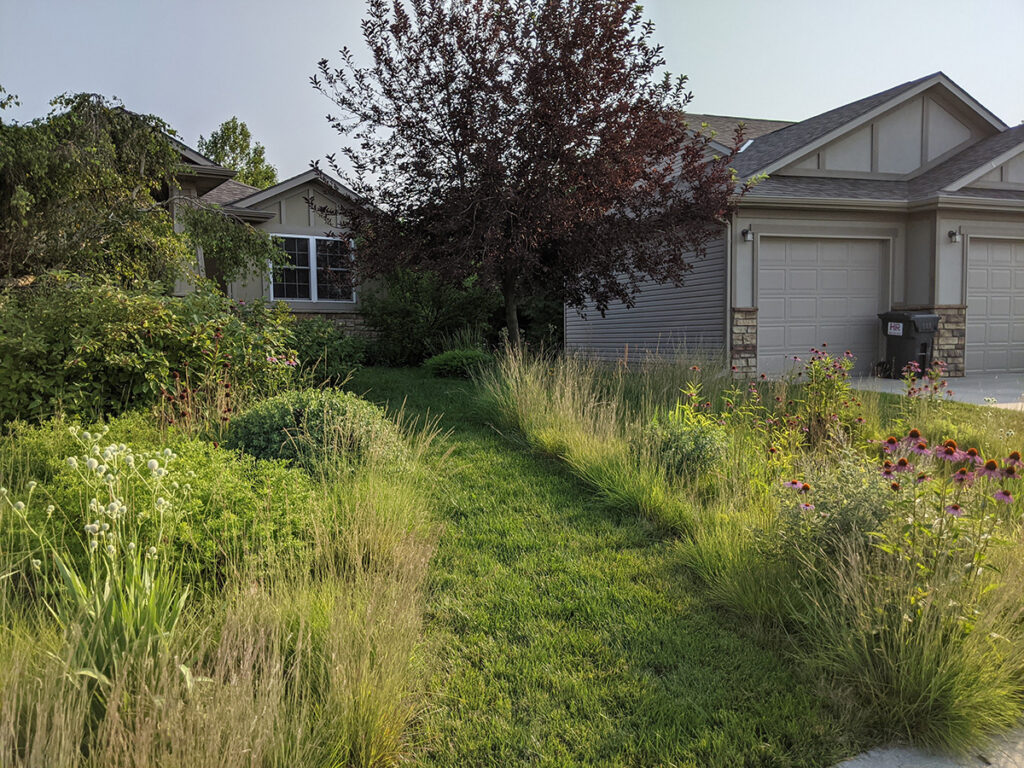
Vogt mows a wide path of turf in the front yard of this suburban Nebraska garden filled with lush, prairie plants. The width of a path depends on the space. “I don’t think you want a six-foot-wide path in a 500-foot garden,” he says. Instead, he generally starts paths at three to four feet wide. Vogt also recommends adding a sign to your yard to mitigate issues with neighbors. “It can be as simple as ‘This is a wildlife and pollinator garden.’ to a more complex ‘This native plant garden requires less water and mechanical inputs, cleaning air while reducing flooding and supporting pollinators.’” Photo courtesy of Benjamin Vogt.
Add a focal point.
A birdbath, sculpture, tree snag, or habitat pile draws the eye and anchors a space. “Benches also make great focal points. Not only do they provide places for rest, but they can double as stakes for tall plants like coreopsis and rudbeckias as well,” says von Gal. But whatever you decide to use as a focal point, “be careful,” she warns. “You don’t want to have visual junk. Reduce any clutter around it and create a path right to it.”
“Cues to care show a human touch, a clear, intentional human interaction,” says von Gal. Maya Lin’s striking sculpture “Avalanche” in von Gal’s garden beckons attention in a grassy meadow peppered with native black cherry trees.
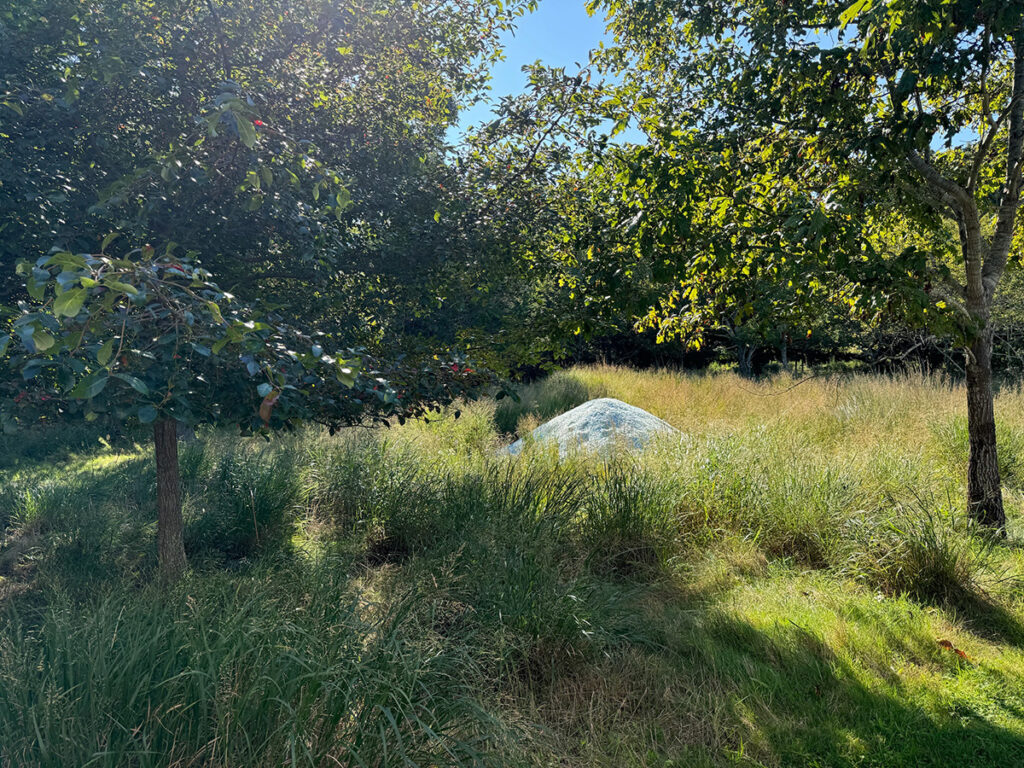
Play with Formality.
“Educating clients to rethink old-fashioned and unsustainable ideas of what a beautiful, tended landscape looks like is a big part of our task as landscape designers,” says Jean-Marc Flack of Hortulus Animae. Formal gardens are often synonymous with control, featuring shorn boxwoods and tightly composed beds with nary a leaf out of place. Flack rethinks the concept by keeping the geometric structure, but opting for a wilder plant palette like native grasses. “In the context of a formal garden, native ‘wild’ plantings can be arranged in a classical formal parterre to create a very pleasing tension while adding much needed biodiversity and habitat,” he says.
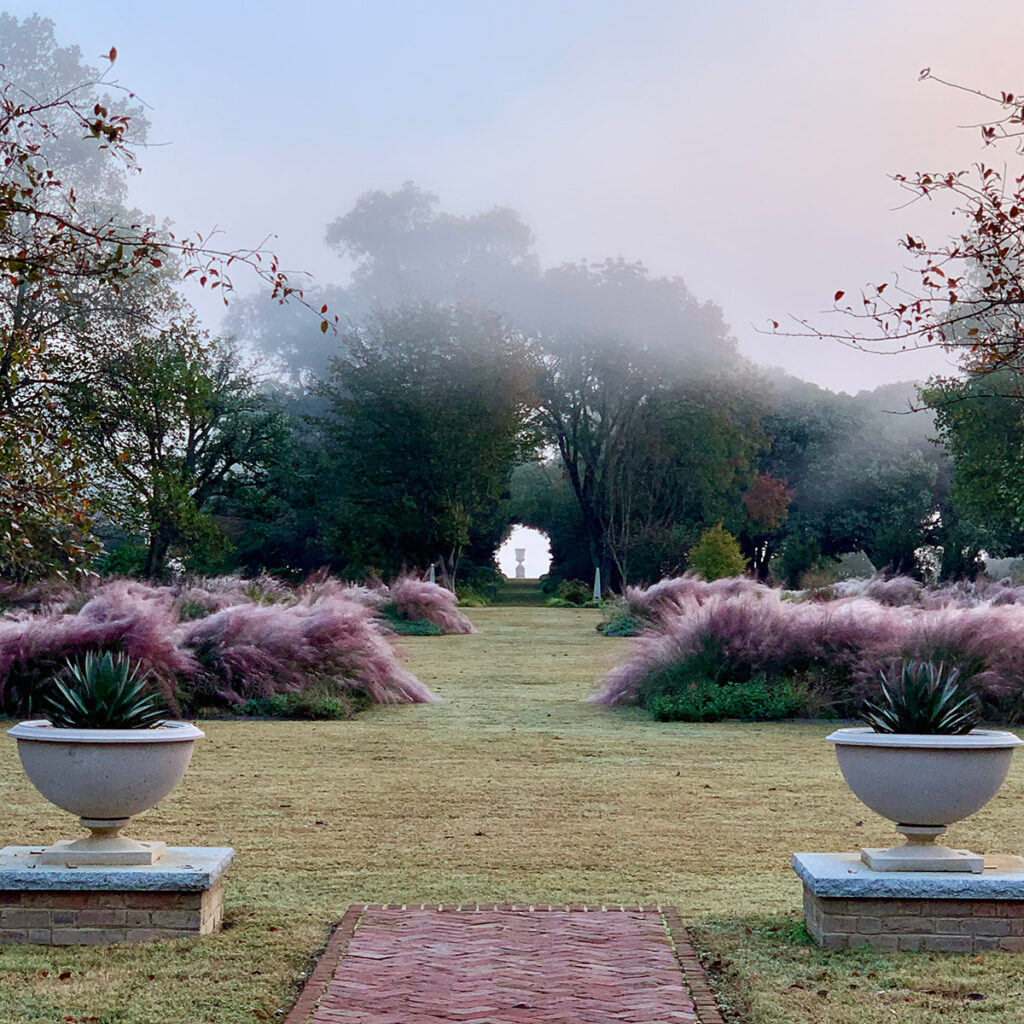
Jean-Marc Flack of Hortulus Animae uses swathes of pink muhly grass (Muhlenbergia capillaris) in a formal herbaceous parterre at this historic property in Virginia. In fall the garden puts on a showstopping display. Photo courtesy of Jean-Marc Flack.
Plant and repeat.
“Repetition of evergreen and other structural plants in a loose herbaceous planting creates focal points and soft structure,” says Flack. In a project in Copake, New York, called the “rambunctious garden,’ he designed an organic spiral that brims with native plants, spilling gracefully onto the paths. To add order to the beautiful chaos, he repeated the evergreen Juniperus communis ‘Gold Cone’ around the spiral, which “enforces a sense of cultivated legibility along the walkway in the midst of a meadow-like plant community.”
The repetition of the evergreen cones along the heavily planted spiral allow the eye moments of rest. Photo courtesy of Jean-Marc Flack.
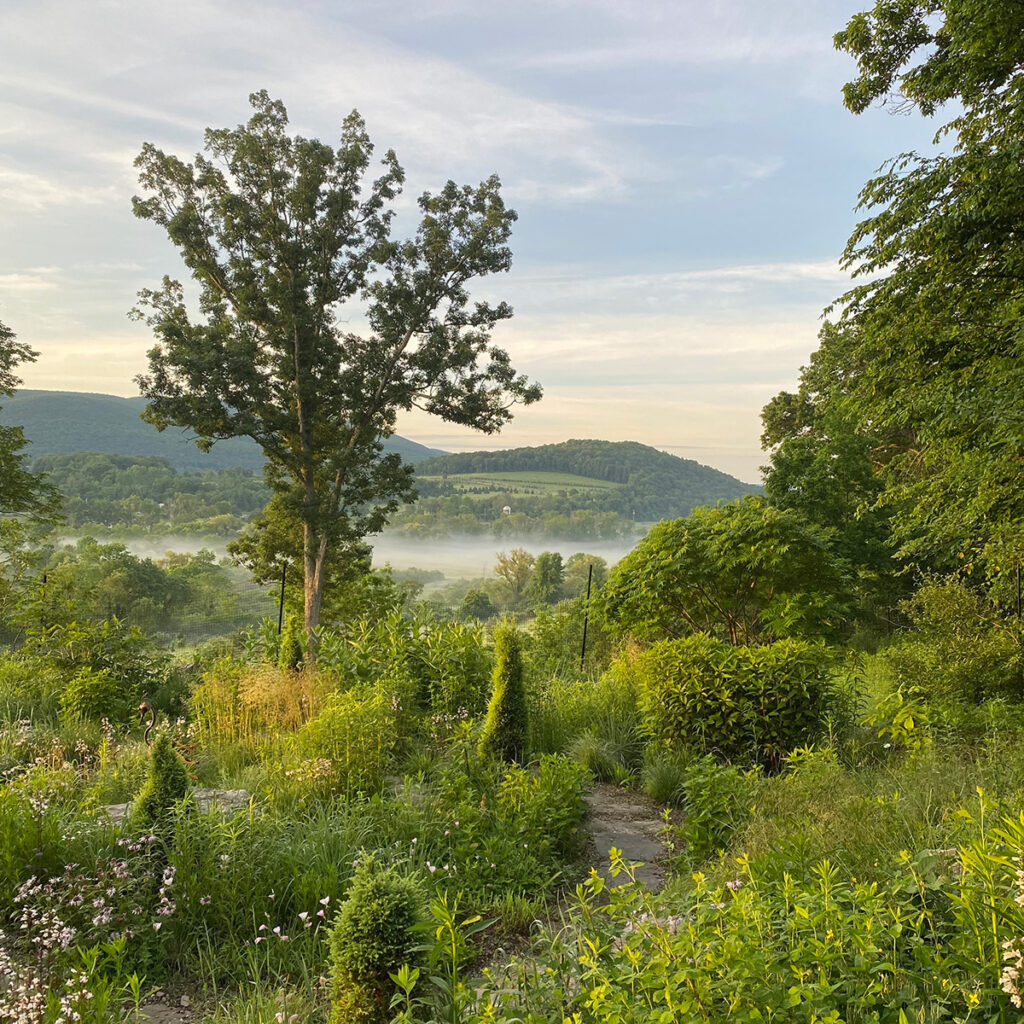
Be bold.
“Ecological planting should not only be functional but also visually striking,” says Claudia West co-founder and principal at Phyto Studio. “Our approach involves creating low, but dense and highly diverse carpets that cover every inch of garden space. These carpets erupt in seasonal floral displays that captivate and resonate emotionally with people. Our plantings are instantly understood as gardens, living works of art filled with life, and reconnecting us with the wonders of the natural world.”
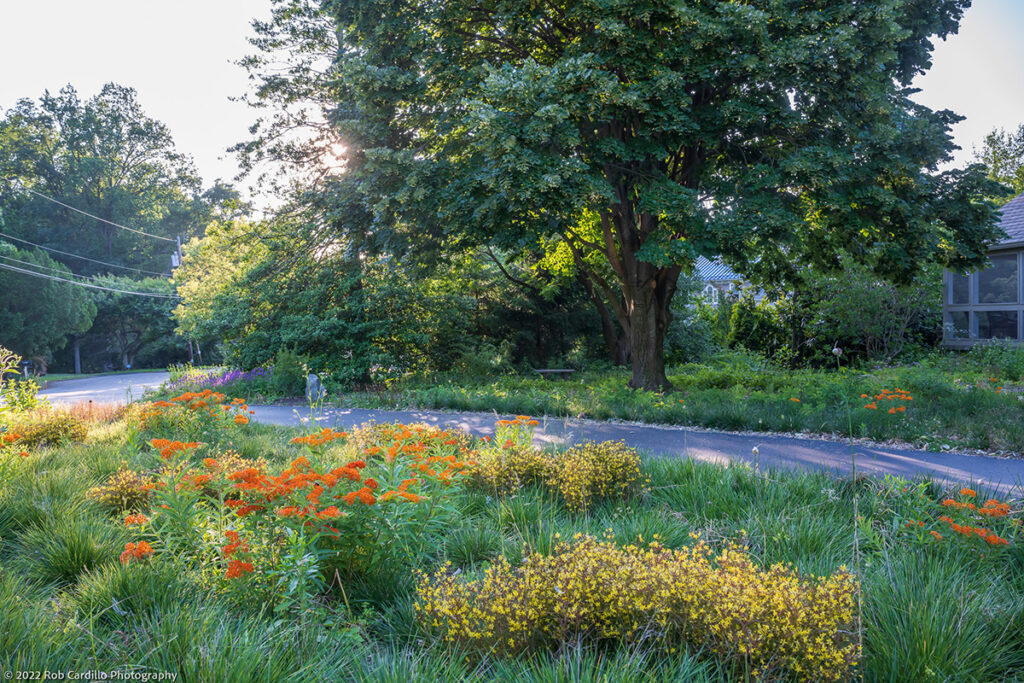
Native butterfly weed (Asclepias tuberosa) and ‘Burgundy Mist’ lanceleaf loosestrife (Lysimachia lanceolata ‘Burgundy Mist’) nestle into a dense carpet of ‘Goldtau’ tufted hairgrass (Deschampsia cespitosa ‘Goldtau’). This highly stylized meadow balances a neat and tidy look with high ecological function. Photo by Rob Cardillo Photography.
by Melissa Ozawa
This is part of a series with Gardenista, which ran on October 29, 2025.
